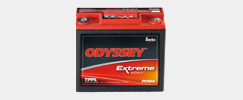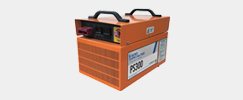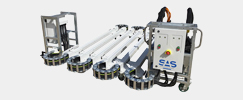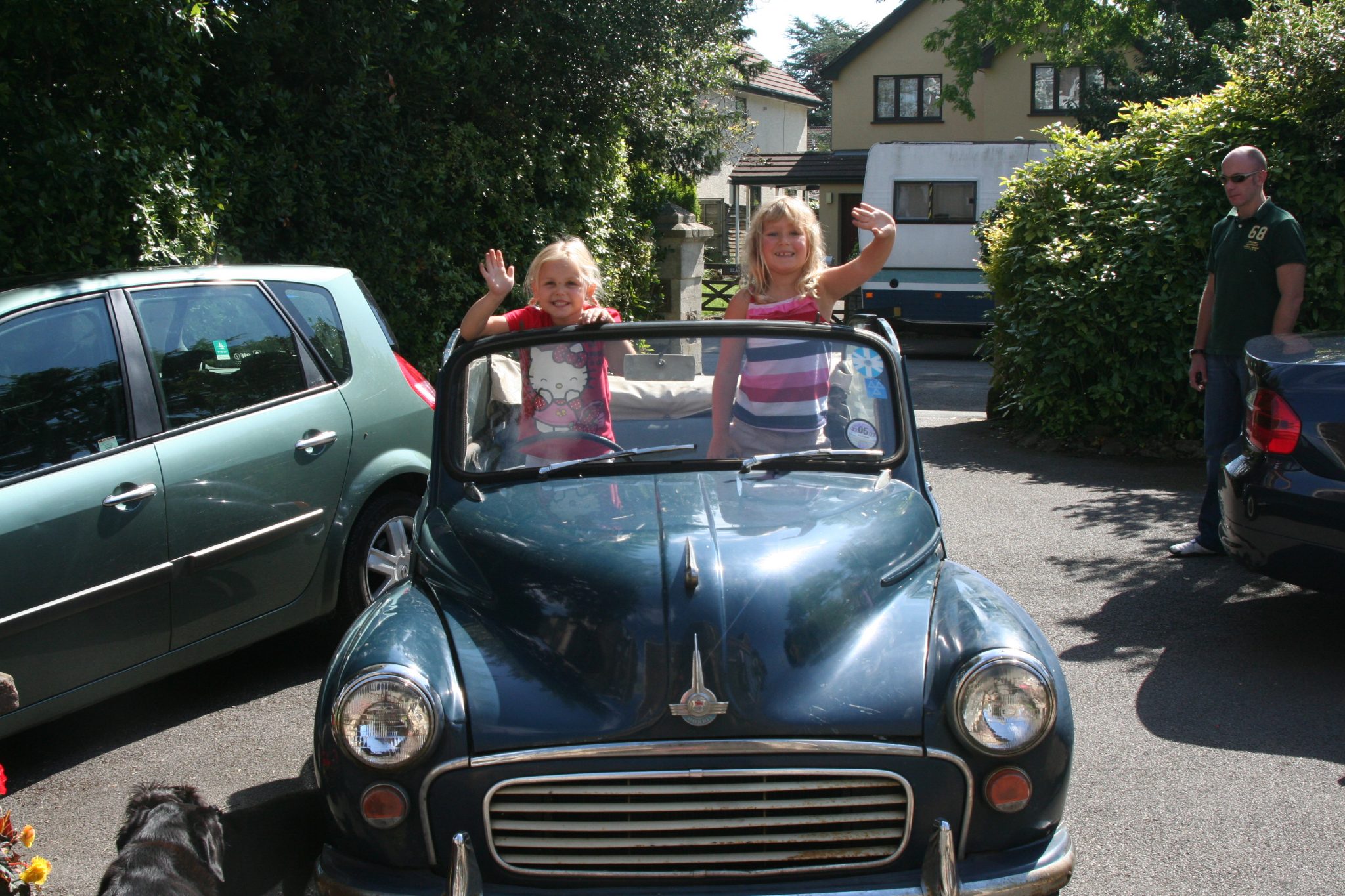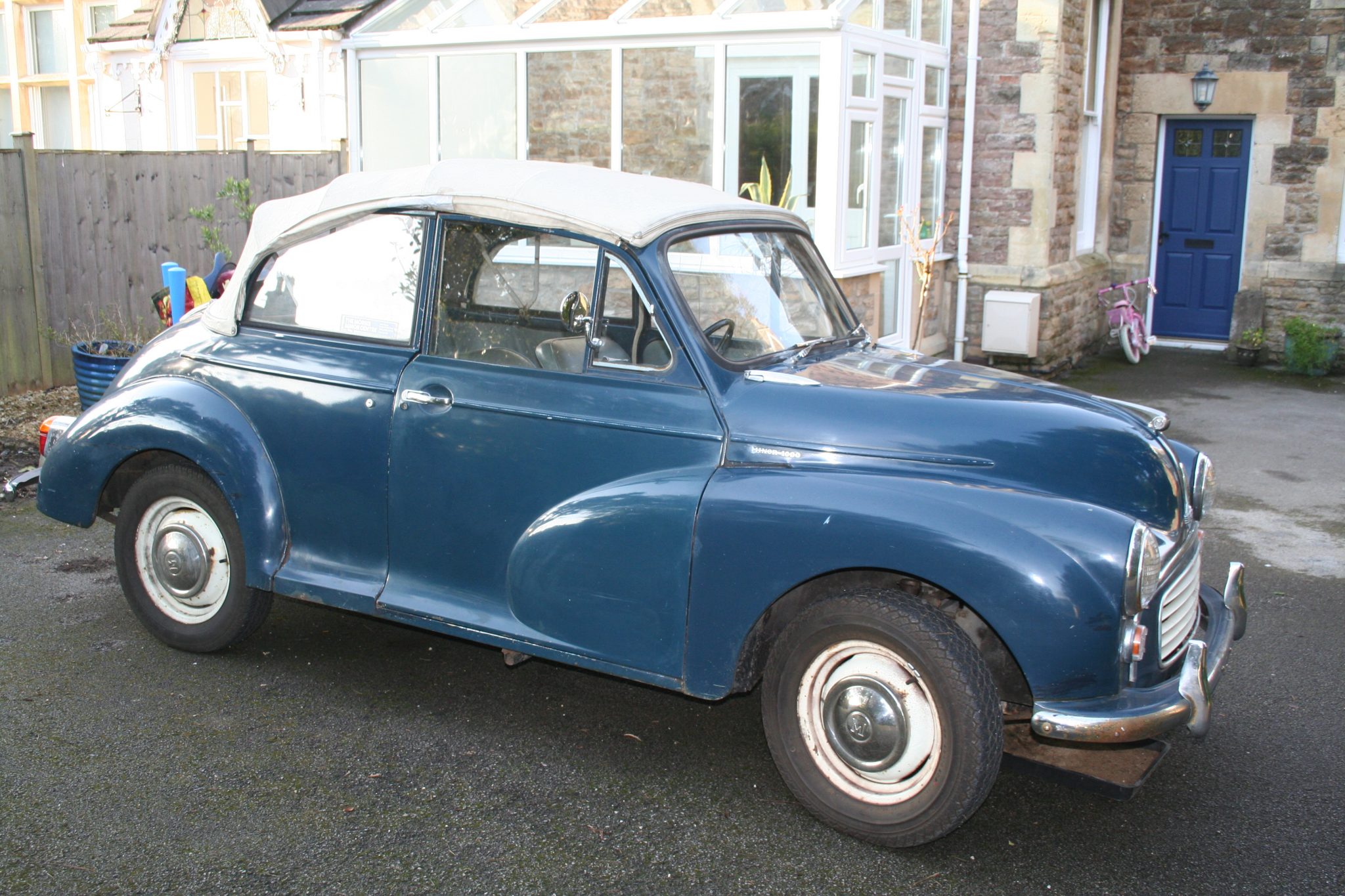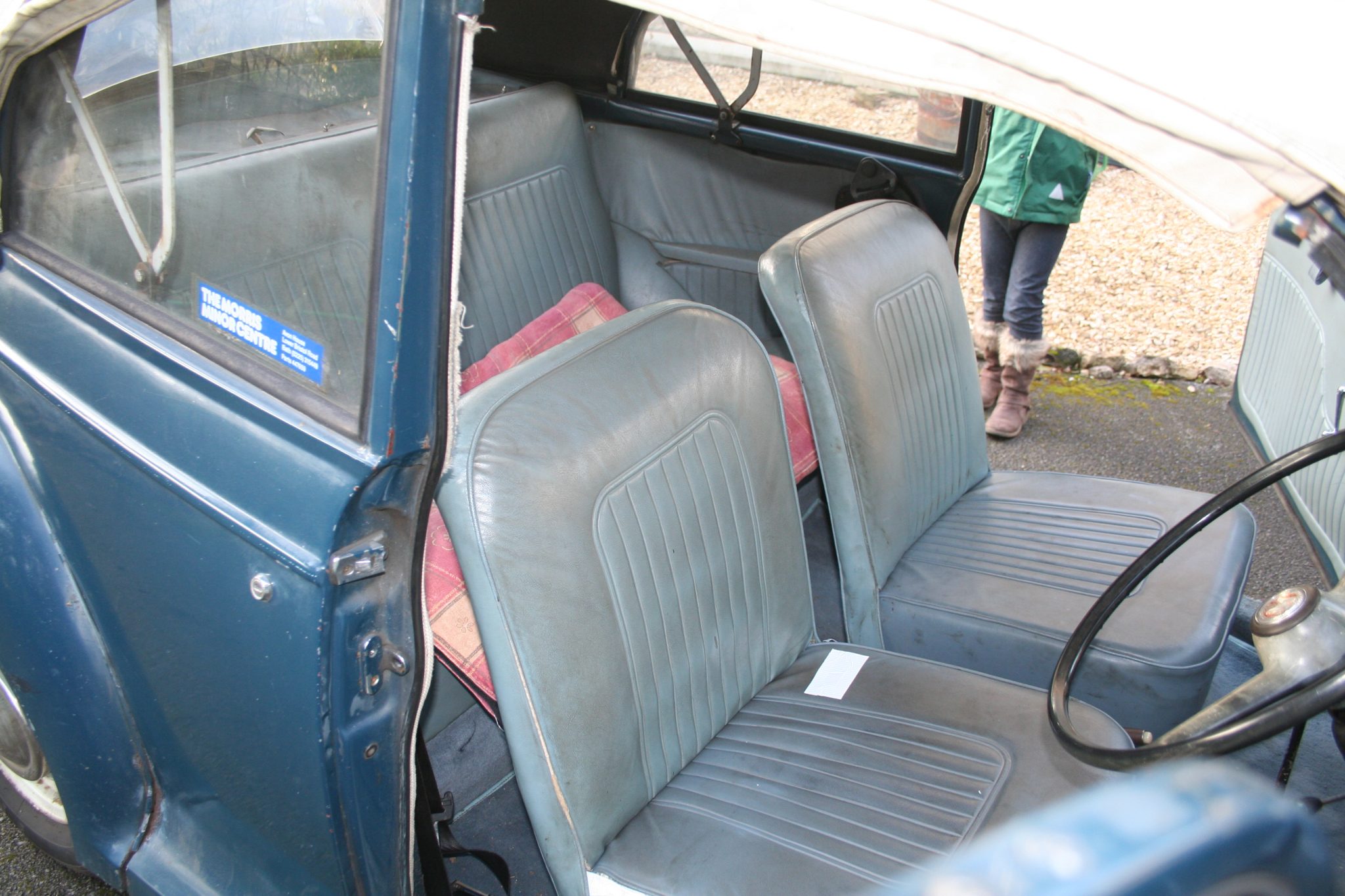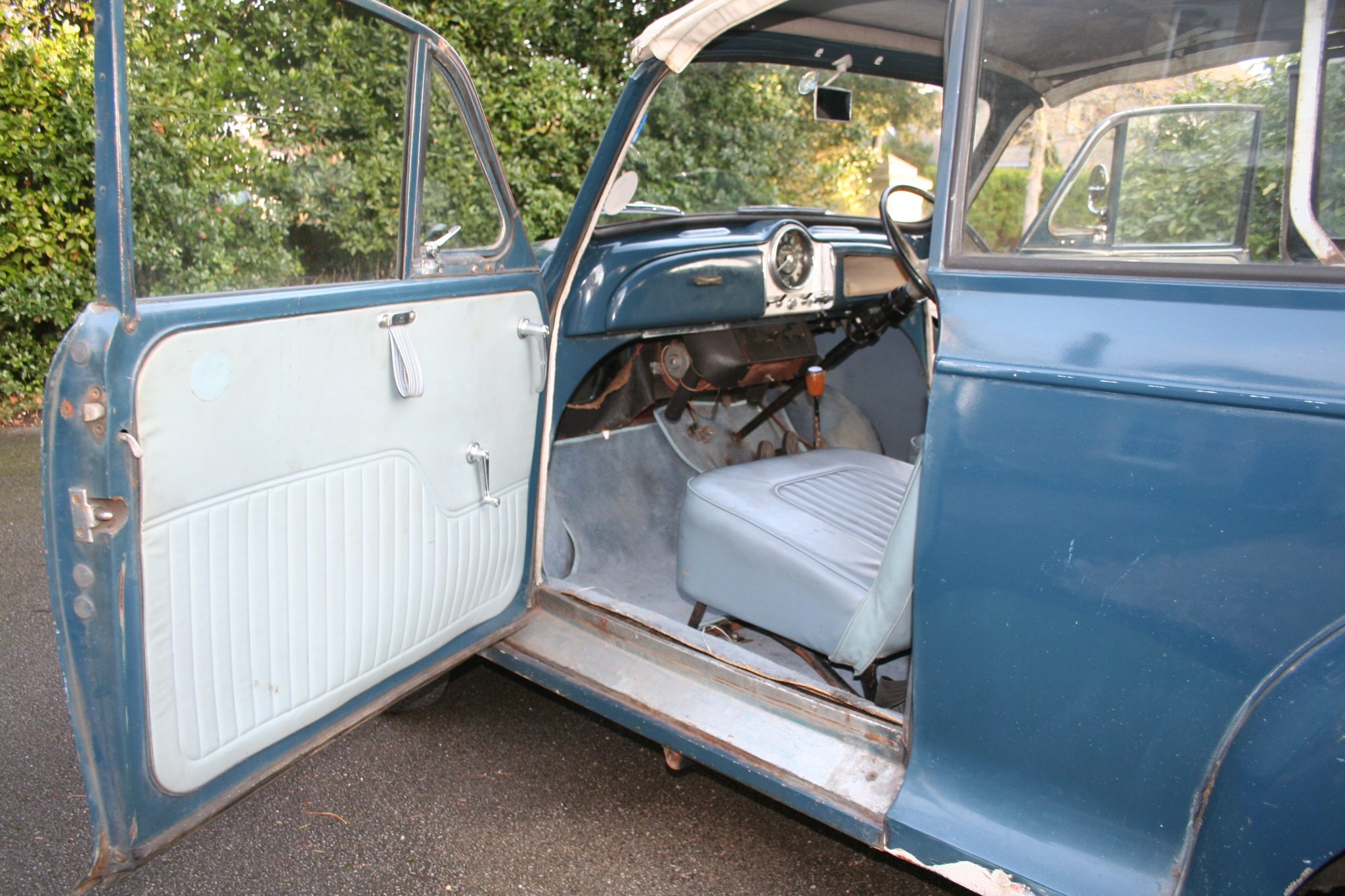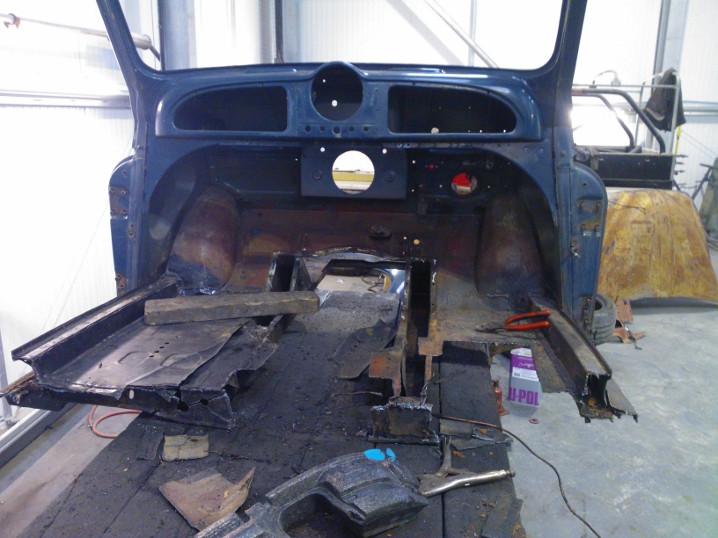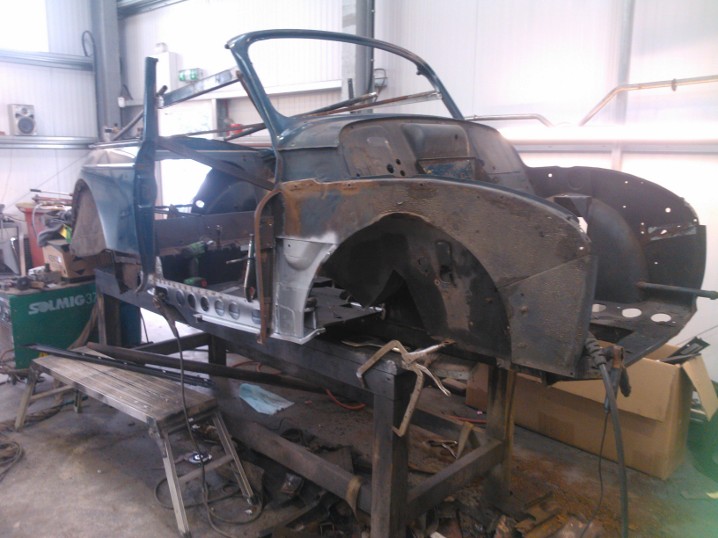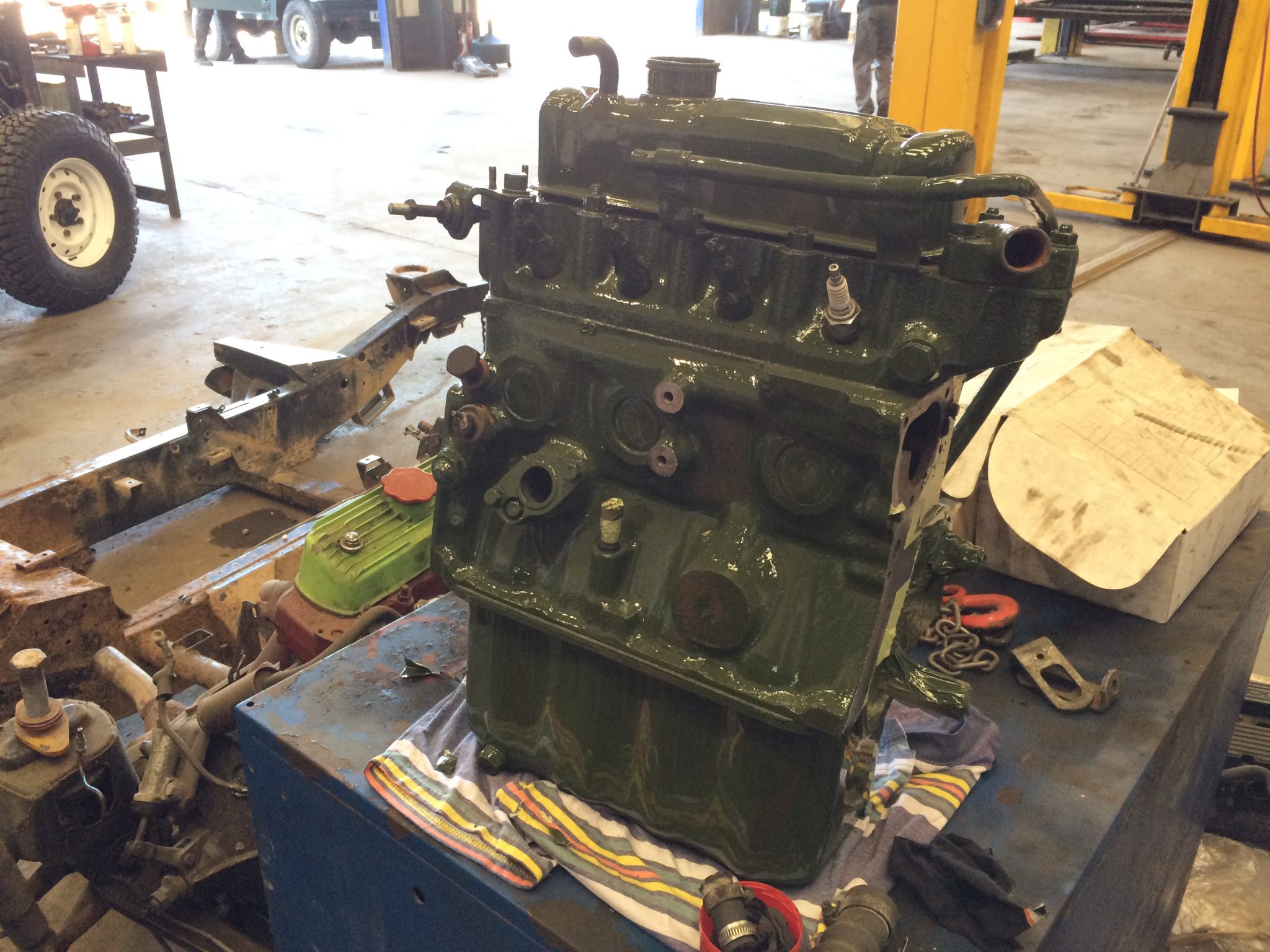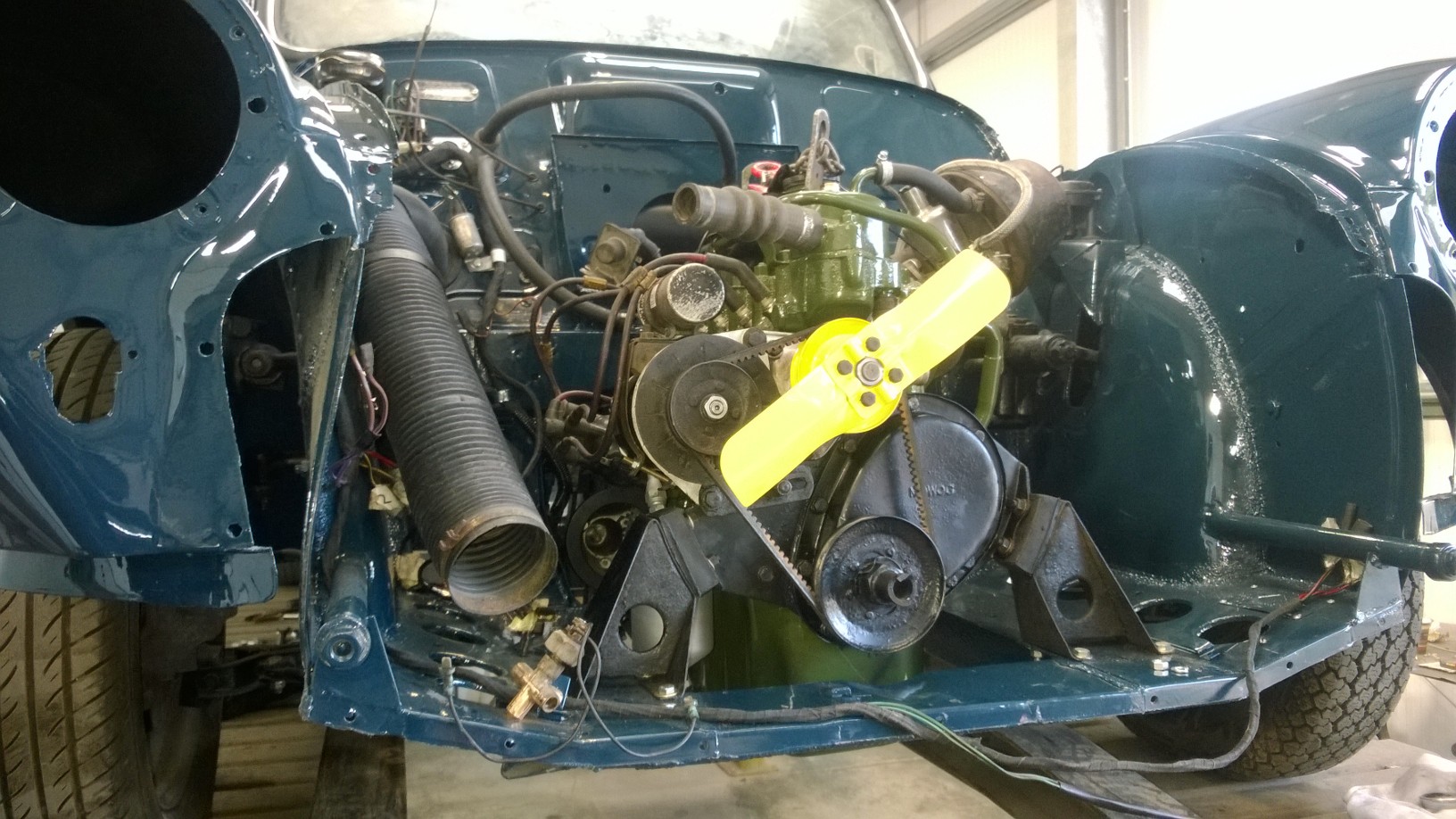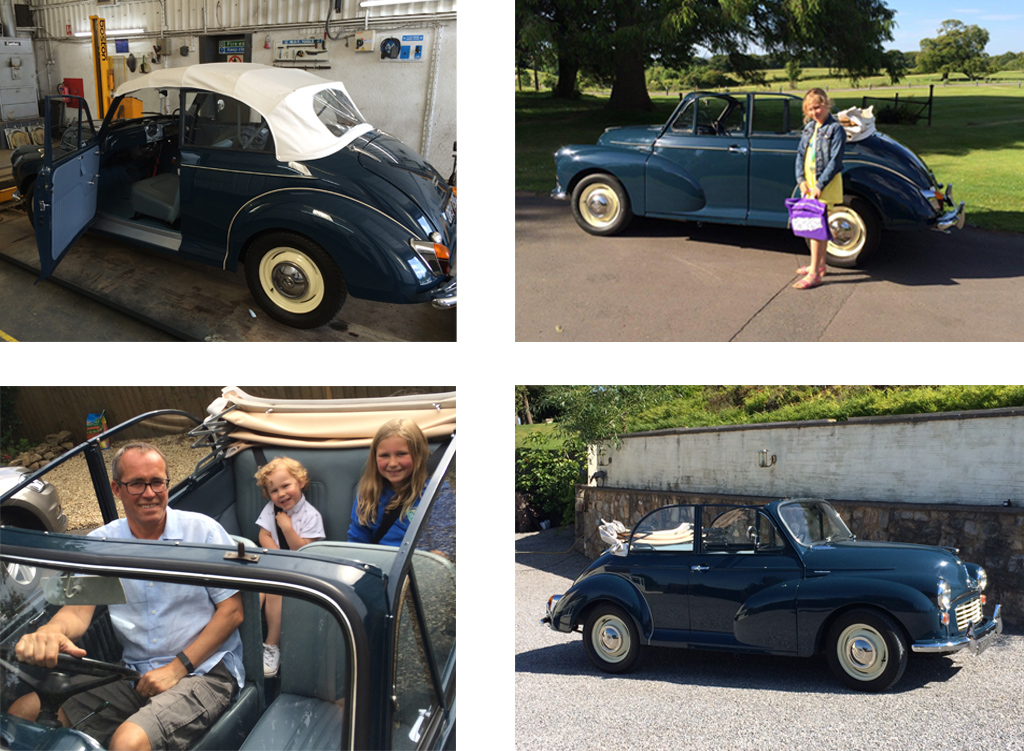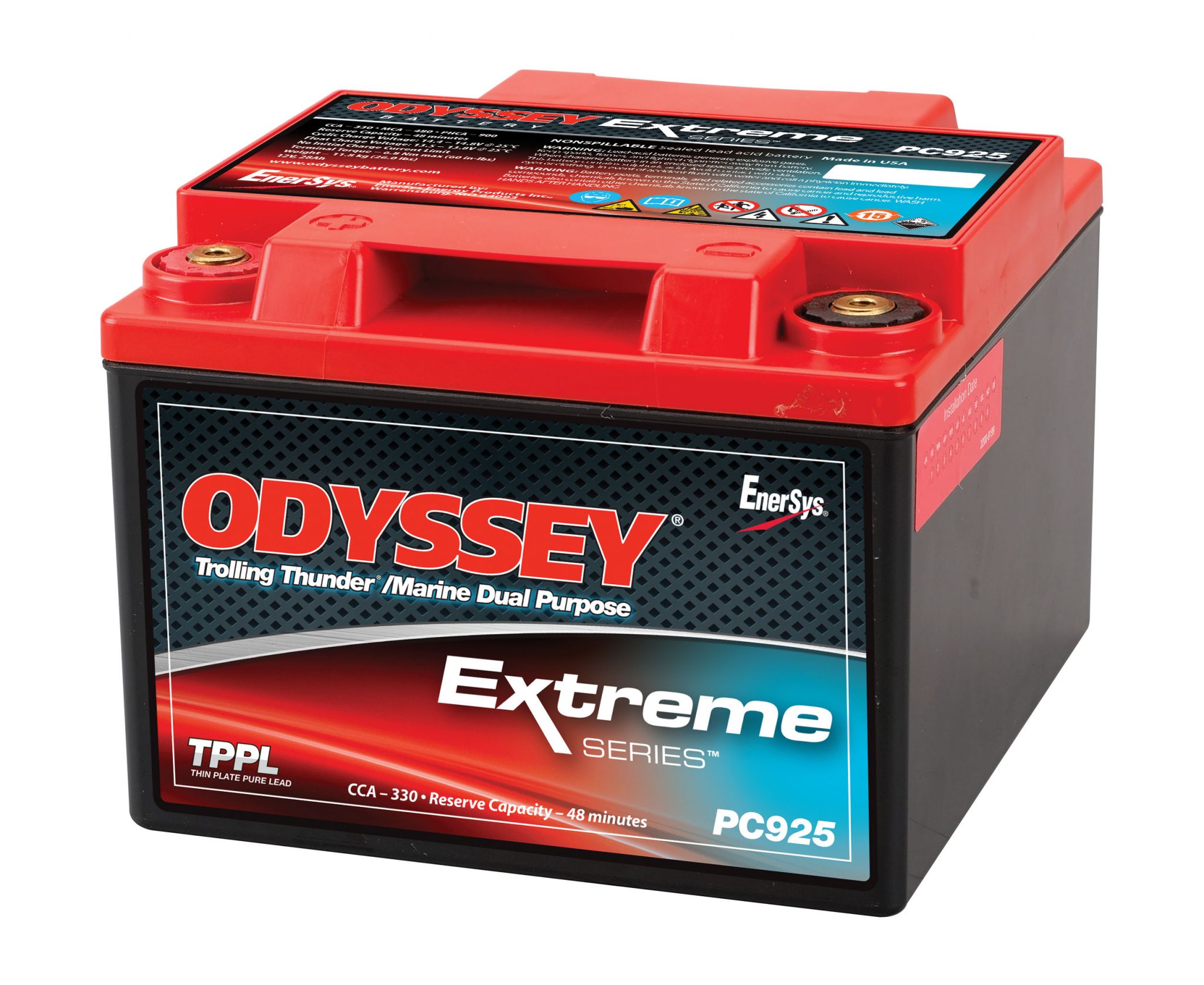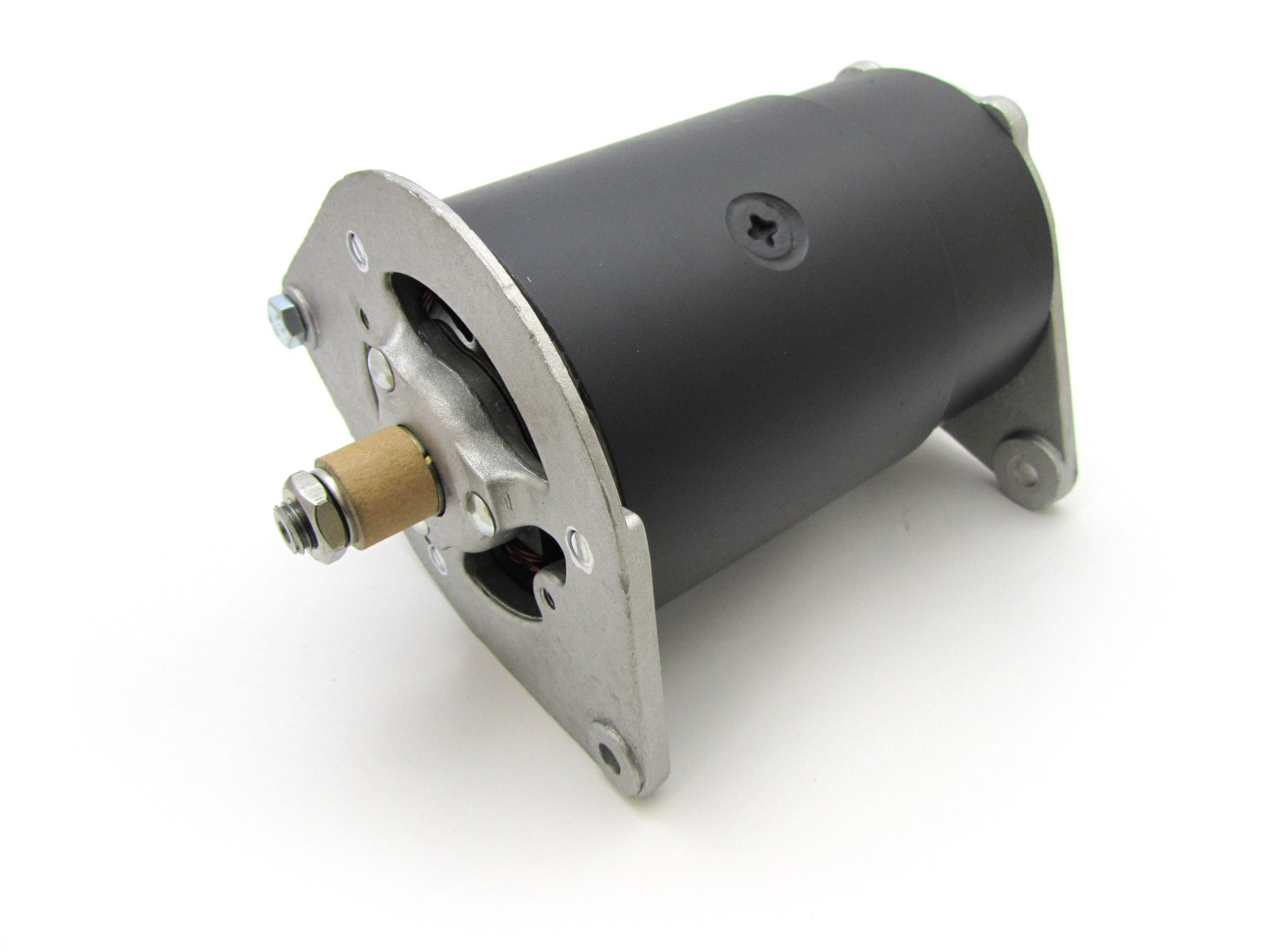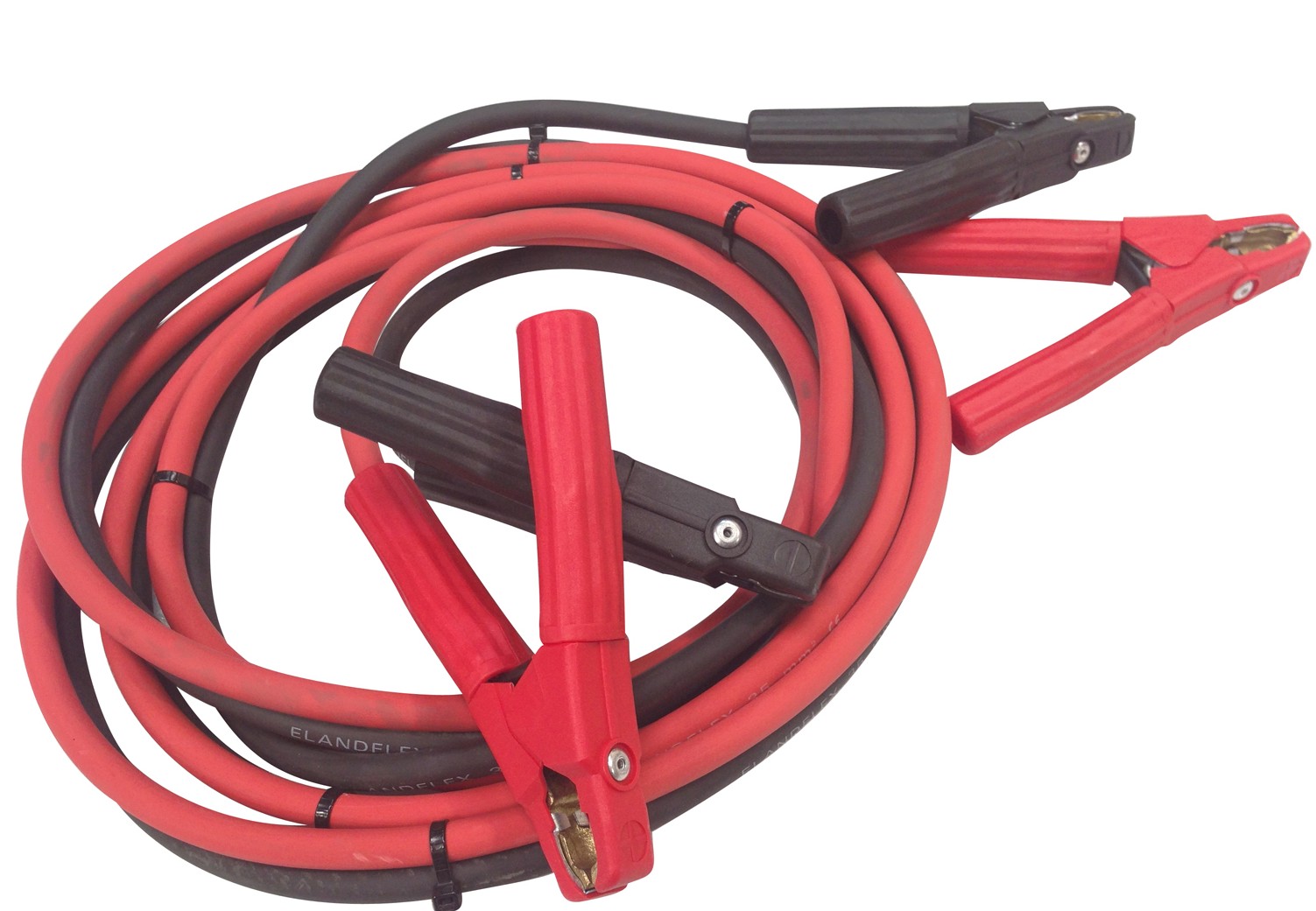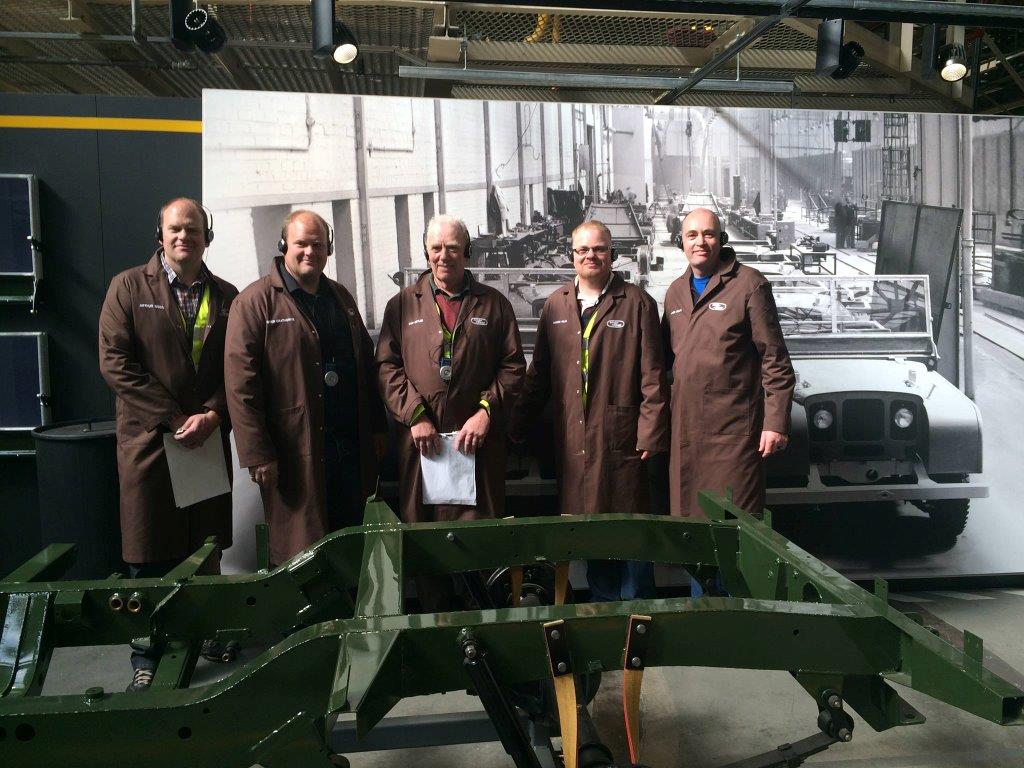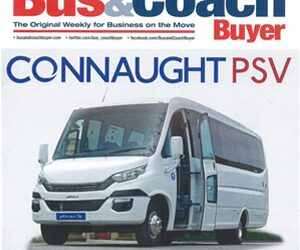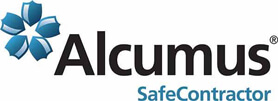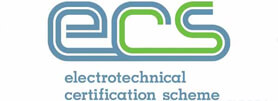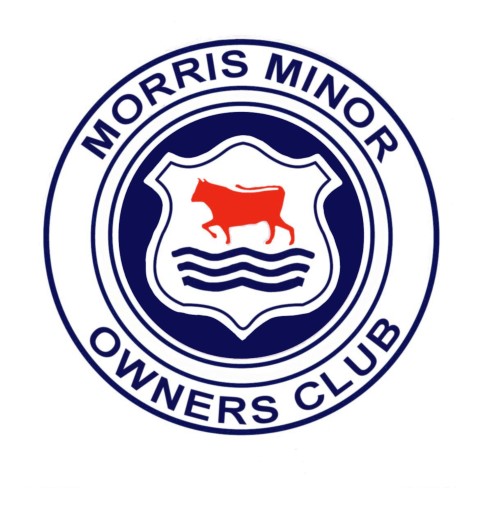 When you’re restoring a car from the 1960s, it can help if you’re involved in a business that produces jump-starting equipment and supplies high-performance batteries. It can also help if you have close connections to a firm with a track record in vehicle restoration work.
When you’re restoring a car from the 1960s, it can help if you’re involved in a business that produces jump-starting equipment and supplies high-performance batteries. It can also help if you have close connections to a firm with a track record in vehicle restoration work.
“The 1968 Morris Minor was at the very bottom of the depreciation curve”
Ken Walker benefits from both, and has made good use of them in a project to bring back his 1968 Morris Minor convertible to its former glory. He is managing director of Powervamp Ltd, a specialist in professional jump-starting and aviation ground power. As part of the restoration, the car has been equipped with several products from the Powervamp stable – “but without detracting from the look, feel and authenticity of the original,” Ken emphasises.
Keep it in the Family
Meanwhile a family friend, John Vanstone, played a key role in connecting Ken with Vanstones Garage in Launceston, Cornwall, which has done the restoration.
Ken originally bought the car, a Trafalgar Blue model which has been named Nell, as a restoration project, but it soon became part of the family. However, Ken still wanted to restore the bodywork and ensure it was mechanically sound.
Initially Ken approached a Morris Minor centre in Bristol, not far from Powervamp’s Weston-Super-Mare headquarters, to do the job, but they pointed out that its condition put it “at the very bottom of the depreciation curve”.
However, John Vanstone told Ken about some of the classic car restoration work done by Vanstones, a business owned by his brother Darren. The company was established in 1985 as a Land Rover specialist, but had branched out into general servicing and insurance repairs, and in recent years had also expanded into restoration projects.
John invited Darren to view the car. “I could see straight away that it had seen better days,” Darren says. “It’s difficult to assess a car at first sight, but it was obvious that it needed a lot of work – the doors didn’t fit well, and there were lots of patches below the waistline. But it didn’t look beyond the realms of possibility.”
Ken arranged for Nell to be driven to Vanstones Garage, and once a budget and timeframe were agreed, it was left to Darren to restore her to her former glory.
“A decision was made to cut the car in half…”
Serious Surgery
Following a closer inspection back at the garage, it was decided to go back to basics. This would involve cutting out all rusty metal and fabricating parts no longer available from scratch. A decision was made to cut the car in half to allow the removal of the remaining bad metal whilst allowing the application of rust inhibitor onto the fresh metal and inside the sub-frame. This unusual process took a considerable amount of work as it meant manufacturing a bespoke jig to keep the shape and measurements correct. The car was taken right back to base metal and rebuilt from the bottom up, any deviations from the original dimensions could seriously affect the cars handling.
Darren comments: “Sean, my lead body shop technician, had to make a calculation to measure original distances rather than current distances, otherwise there was a possibility it wouldn’t fit back together correctly and the door gaps wouldn’t match.”
“It’s not normal practice and it is a last resort because you can lose so much of the structure of the car. It is serious surgery and due to the severity and re-alignment issues, it isn’t something we jump into lightly.”
Keeping it Original
Due to the extent of the corrosion, new panels and cross members needed to be installed and a brand new floor pan was formed which, if maintained properly, could last for many decades. Despite the prolific rust, as many of the original panels as possible were kept to retain the spirit of the Morris Minor, as well as keeping the cost down.
Whilst Sean had the bodywork to deal with, Darren Vanstone focused on the engine and mechanics. He comments: ‘When it came to listening to the engine, there was lots of rattling and oil was leaking from a number of seals. We had to replace the timing chain with a new Duplex mechanism and the failing oil pump and water pump were also replaced as were the worn shell bearings.”
“The engine was basically in good order, but it had clearly lacked maintenance over the years and was showing general age related symptoms consistent with the cars age. The crank shaft was worn, but was deemed acceptable to be left based upon the cars occasional use.”
‘The engine was tidied up and colour coded to make it look new, but we were also conscious to keep it looking original”
Reunited
Altogether the restoration took two years to complete, (starting in August 2013), and at one point had half a dozen staff working on the project to complete the rebuild. Ken invested a respectable amount of money to bring ‘Nell’ back to life, but acknowledges that it was worth every penny – ‘there can be no doubt ‘Nell’ became a labour of love for the Vanstones as well, with many hours given to bring the car back to its former glory.’
Darren comments: “When we first looked at it we didn’t realise how much work was required and the remit changed from a light restoration to give it a few more years; to let’s do this once and do it for life. “
“It was great to work with Ken on the project as he understands mechanics and he would bring his family along to see how the project was progressing.
The icing on the cake was when we waved goodbye and saw the car leave – I understand his daughter was waiting on the wall at home for the car to come back, it was like we had brought a member of the family back to life.”
Upgrades
‘Nell’ has taken up full time residence on Ken’s driveway and has been used on many occasions throughout the summer. However, despite looking brand new she still had the original worn electrical system and, like numerous classic cars on today’s roads, would be prone to intermittent starting issues due to weak battery and an original dynamo.
Ken decided to use ‘Nell’ to showcase some of the premium automotive products that his company, Powervamp Ltd, retail whilst also making the car as reliable as his daily drive.
*An Odyssey PC925 dry cell battery was installed to provide three times more cranking power, zero maintenance and has the ability to hold its charge for over 2 years – ideal for any seldom used classic car. The engine will turn over and fire up more quickly, lights will shine brighter and any ancillaries will operate more quickly and effectively.
*A Powerlite Dynalite alternator was installed as a direct placement for the ageing dynamo. The Dynalite retains the exact same look as the original factory fitted dynamo, but provides all the benefits of a modern alternator whilst remaining sympathetic to the look and feel of any period car. The Dynamite can save up to 40% of the original dynamo weight, whilst delivering up to 80% more power.
*Highly flexible aviation grade battery cable was installed to replace the original leads ensuring all battery connections were free from broken strands and high resistant hot-spots.
*Finally, Ken added a mini lithium jump-starter in the glove box, not so much for the sake of the Morris Minor – but you never know who else you’ll meet on your travels with a flat battery. The pocket sized pack can start 12v engines up to 3ltrs and even has dual USB sockets to recharge your phone or tablet device.
Thank You
‘Nell’ is taxed and insured for use all round the year, and Ken is confident that he’ll be using the car throughout the winter, whatever the weather – after all, a flat battery is now no excuse for not giving her a run!
Ken and his family acknowledge all the hard work that went into getting ‘Nell’ on the road, especially all the staff at Vanstones Garage who went beyond the call of duty to ensure they delivered a first class service and within budget.
Vanstones Garage can be contacted at
Newport Ind Est
Launceston
Cornwall
PL15 8EX
Telephone: 01566 773551
Website: www.vanstonesgarage.co.uk
Email: aftersales@vanstonesgarage.co.uk



